So; many moons ago, if you remember, I bought 4Kg of reverse twist wool singles. There was no other information available when I bought it so it was a bit of a shock when I discovered it was not much wider than an ordinary sewing cotton and worked out to approximately 60 threads per inch (wpi). Undaunted, I did the calculations to weave up about 3 metres of plain, fairly open weave on 8 shafts, a total of 840 threads (ends) to measure and thread up. It took many days and was an absolute nightmare with such a fine thread. Keeping the tension was very difficult especially as there were some crossed threads on the back beam (despite doing everything by the book and double checking and having the husband handing me each thread for each heddle!).
Despite all this the weaving was going well. Until I tried to advance the warp. Not only were the threads crossed on the beam they were also threaded through the wrong heddles and crossed again. Making it impossible to wind anything on. I tried my best to figure a way round and thinking back, the obvious thing to do would have been to cut the threads and re-thread them correctly or even to sacrifice that few inches of warp and have a narrower fabric. However, by this time I was utterly fed up with the whole thing and cut the whole lot off, saving just the small woven piece as a sample. Frustration Ruled!

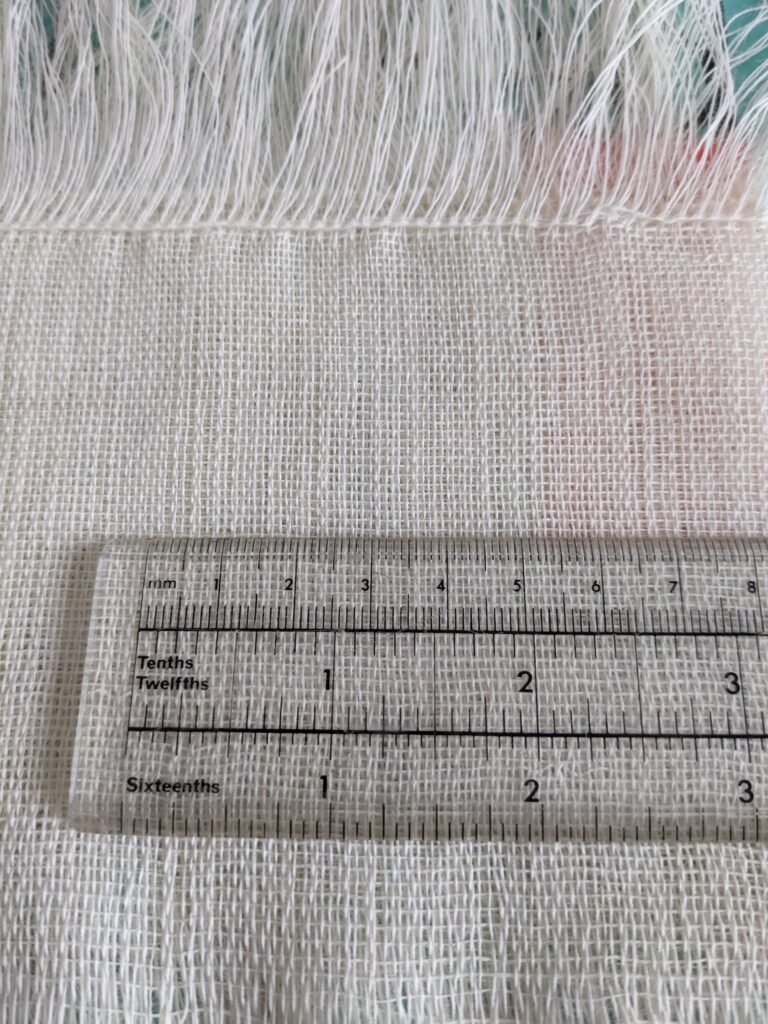
I then spent many weeks in between various other projects to figure out how I could make all that yarn more user friendly. It may not have been so much of a problem on a proper floor loom but my Ashford 8 shaft table loom wasn’t up to it. (I’m in the process of customising it so future weaves of very fine wool may be an option once more. But that’s for another time).
I decided I would chain ply it. Assuming the reverse twist was ‘S’, anticlockwise (the conventional way), I plied ‘Z’, clockwise with my fingers crossed as I don’t know in which direction mill spun wool is usually processed. I gave it plenty of extra twist and once washed and dried it turned out pretty good and worked out at 30 wraps per inch which was still pretty fine but much more manageable.
Just a 68 inch warp this time and 20 inches wide. I still wanted to have an open weave fabric so decided to use only 1 thread per slot in my 10 dent reed. This was a huge mistake as it made my maths wrong. I’d already measured and cut the warp with 350 ends……..my reed has only 317 slots! Instead of sleying as I should have done (1,2,1,2) albeit for a closer weave, I choses to do one each slot and lose the width. A big lesson learned; only calculate your weave/warp/set when your brain is not frazzled!
I wove the entire length of the warp but wasn’t happy with the result as it was too loose and the weft kept moving around. Do or die, I threw it in the washing machine to see how it would perform. This was an experiment after all! It actually came out not too bad, but I wouldn’t machine wash again as the fringe felted wildly. This wasn’t a problem as I’d hemstitched and could cut the fringe off. What was curious was the way the weave behaved. It was very wavy, and in both directions. Was this because of the loose weave structure or was it because of the extra twist and plying?
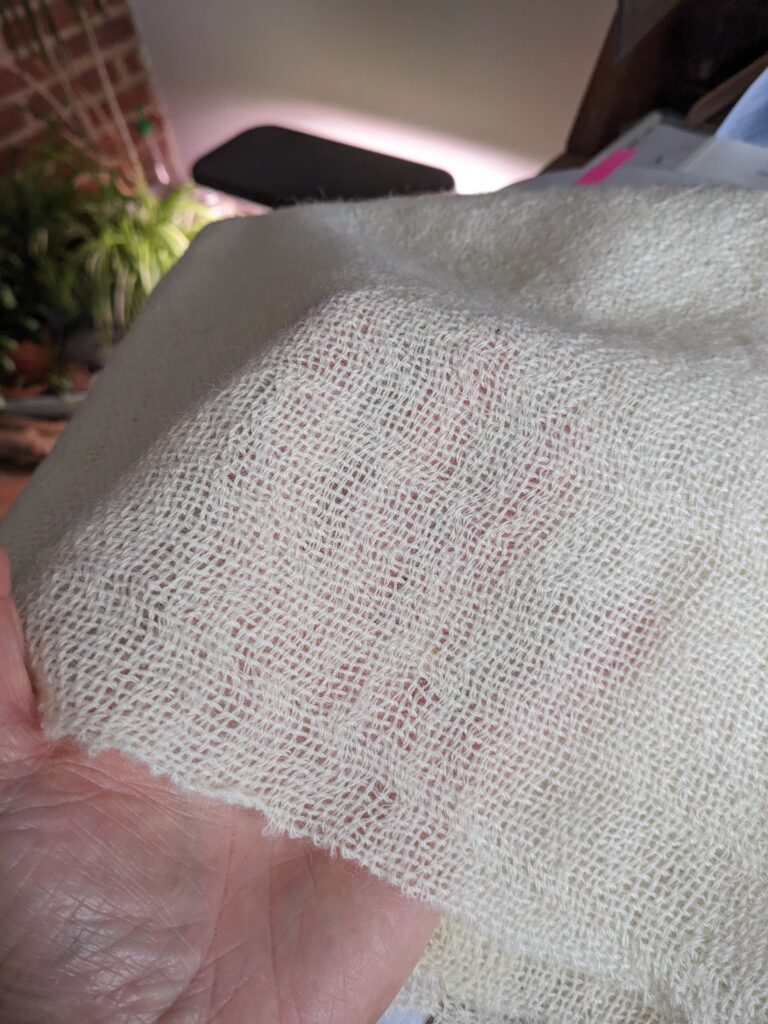
The very loose open weave after washing
I still had some leftover warp ( the 150 or so ends from the previous miscalculation) so I threaded up the loom once more. Only this time I used the ‘proper’ set for the yarn. It wove like a dream and I loved it. I ran out of weft just over halfway through so substituted for some commercial tweed singles just to use up the warp. This, as far as I know, was not a reverse twist spin so the results would be interesting.
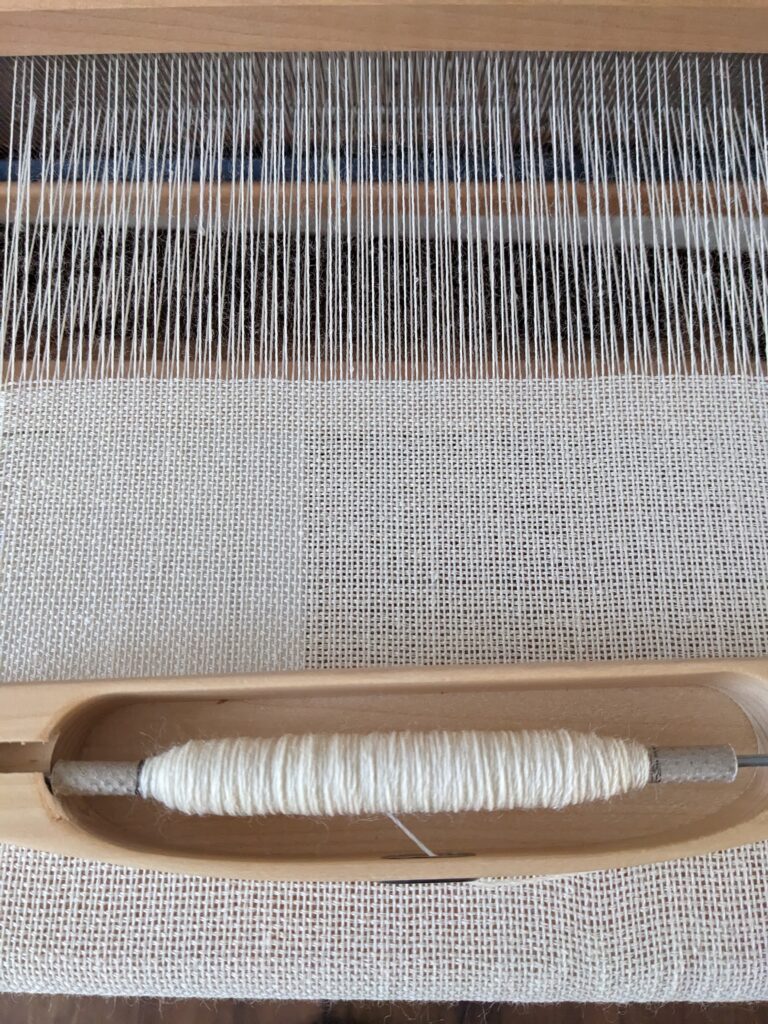

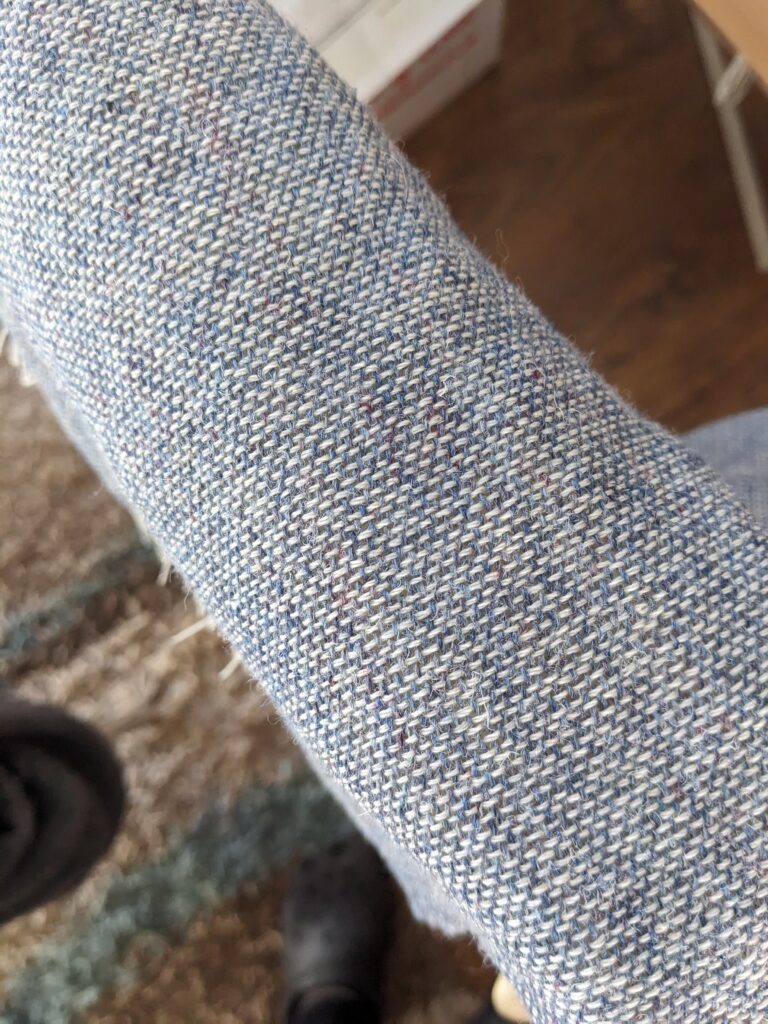
Off the loom and this time I hand washed in hot water and hung it to drip dry. Again there appeared the curious wavy pattern. Also visible on the substituted weft section of the fabric. It almost looked like it had been woven as a twill or a different weave structure than plain/tabby weave.
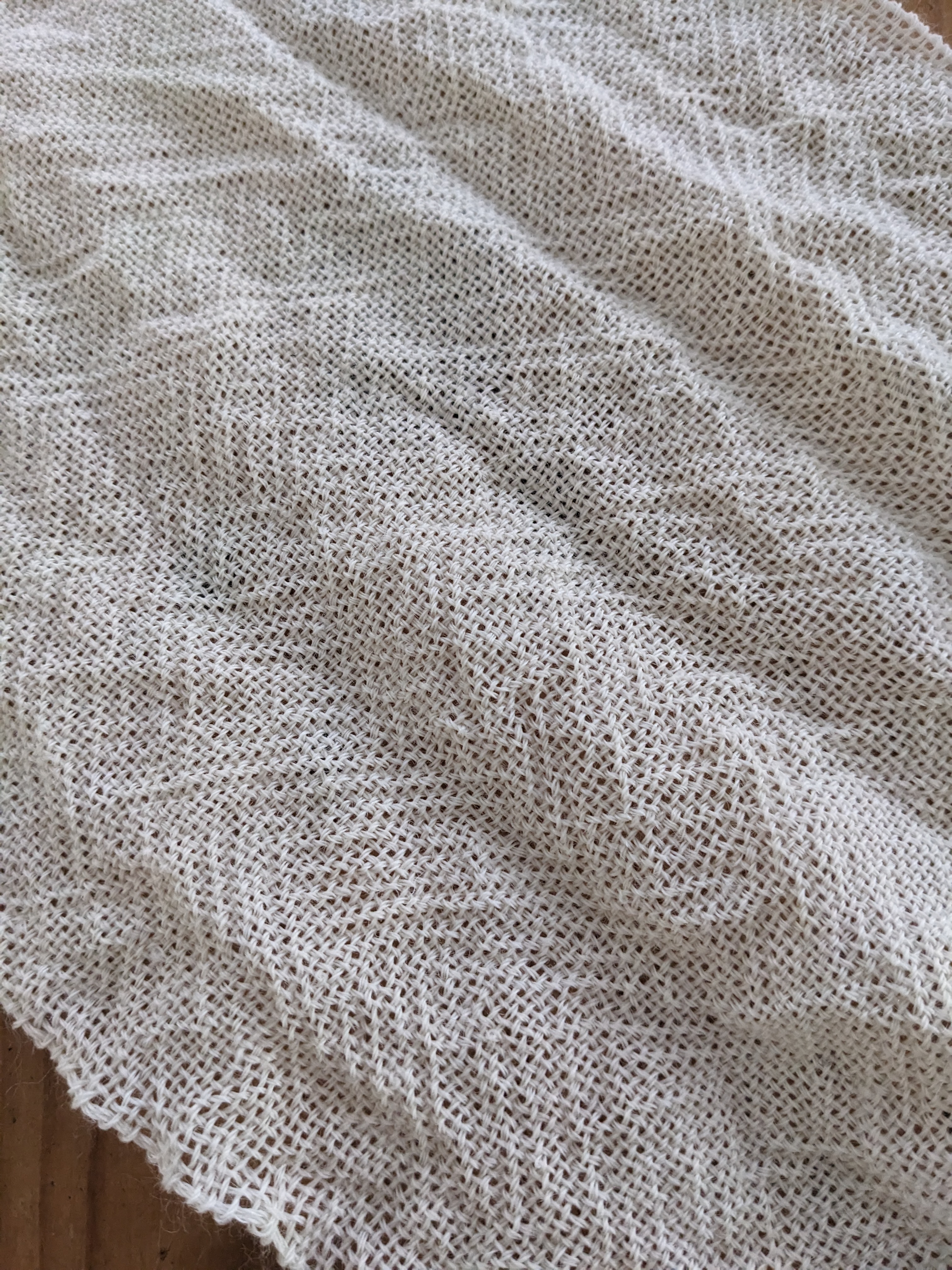
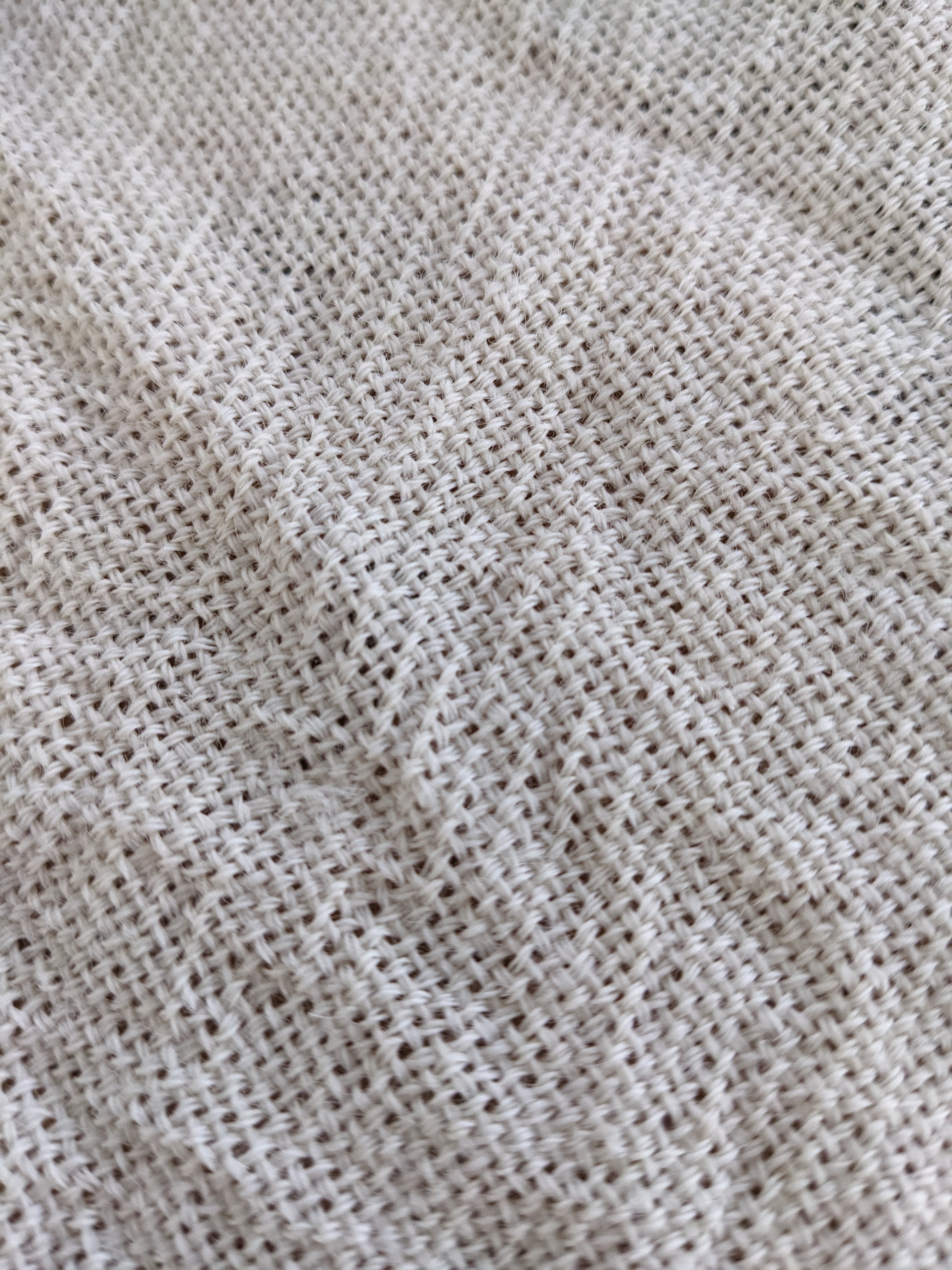
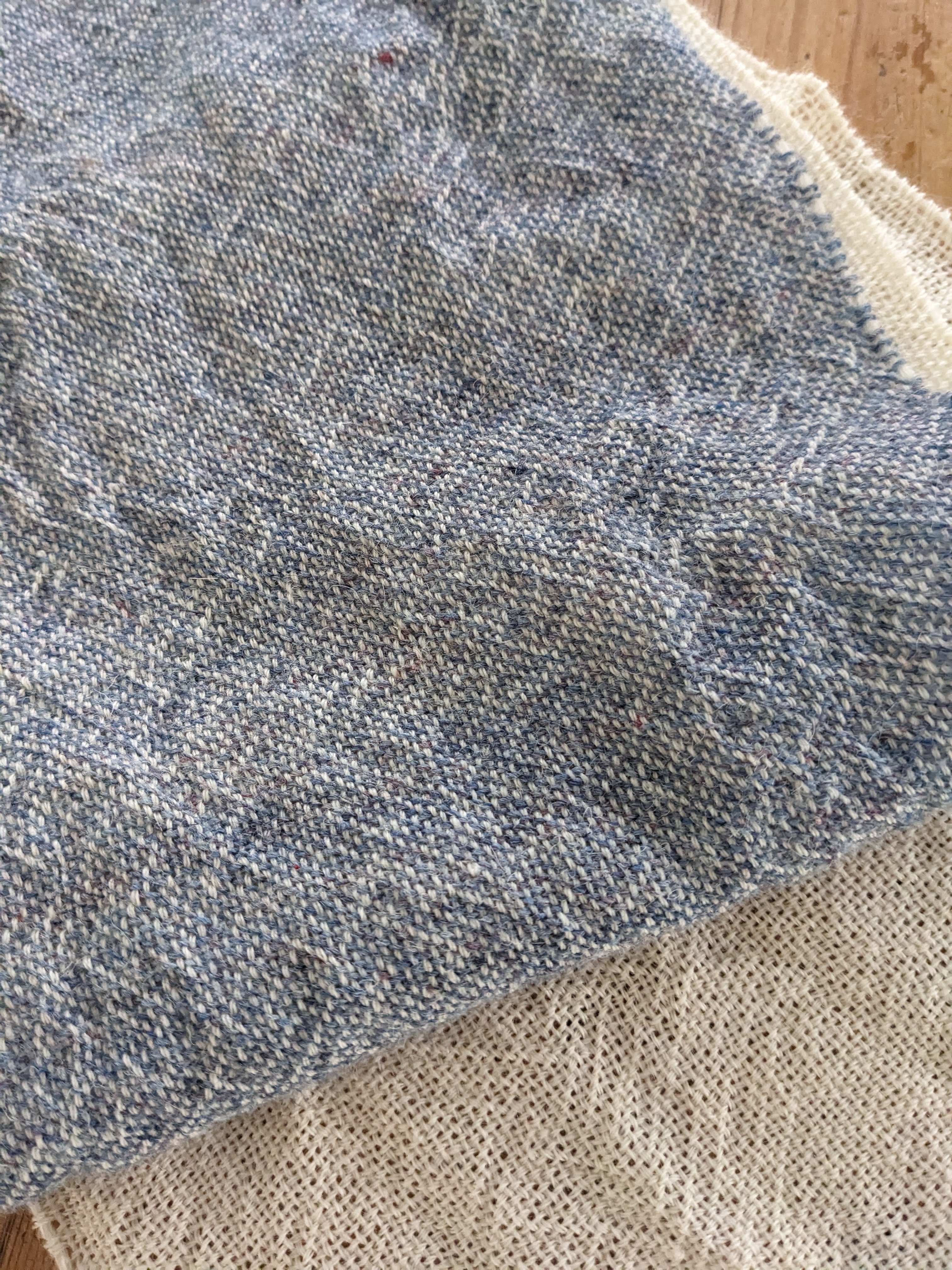
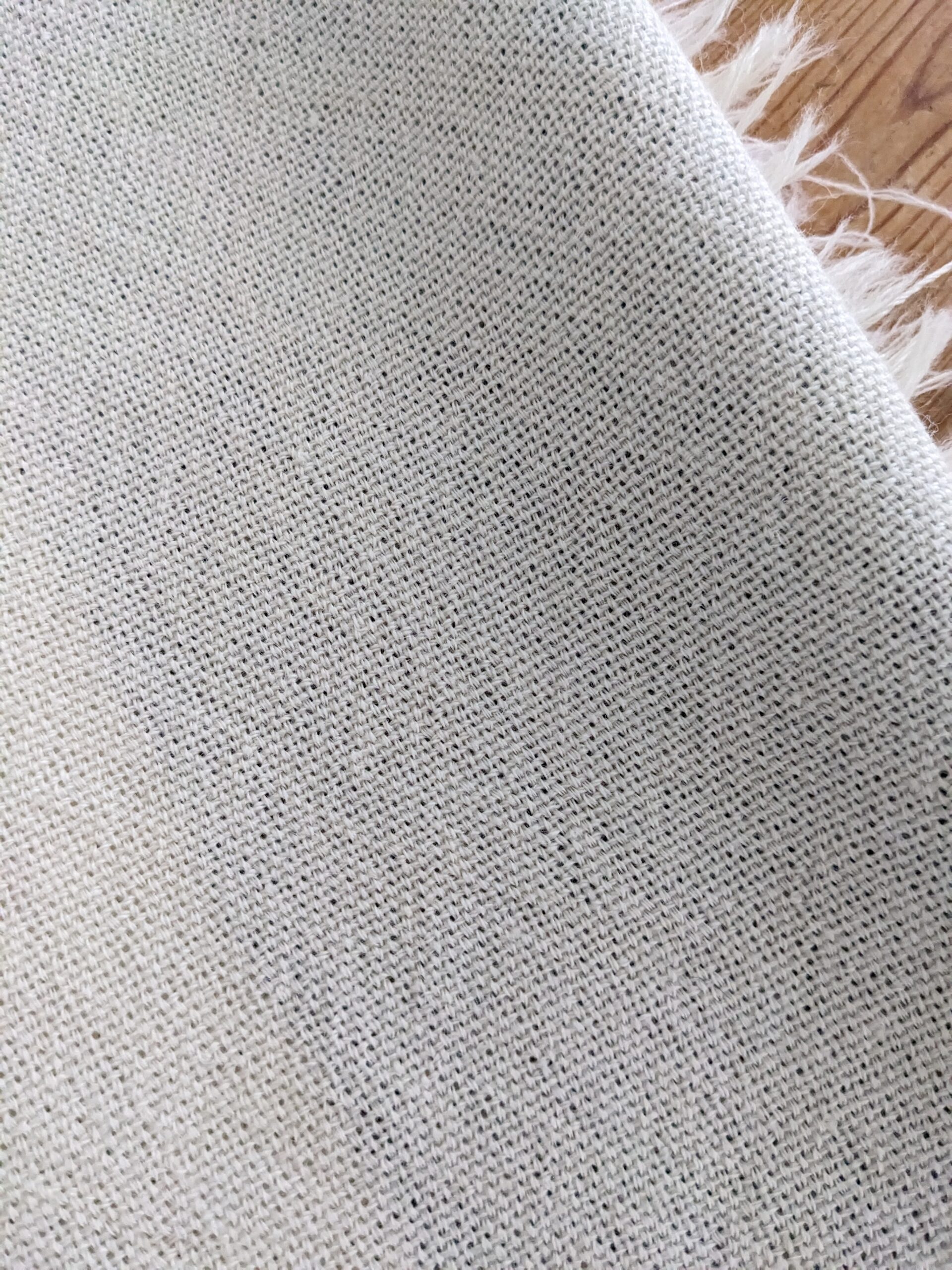
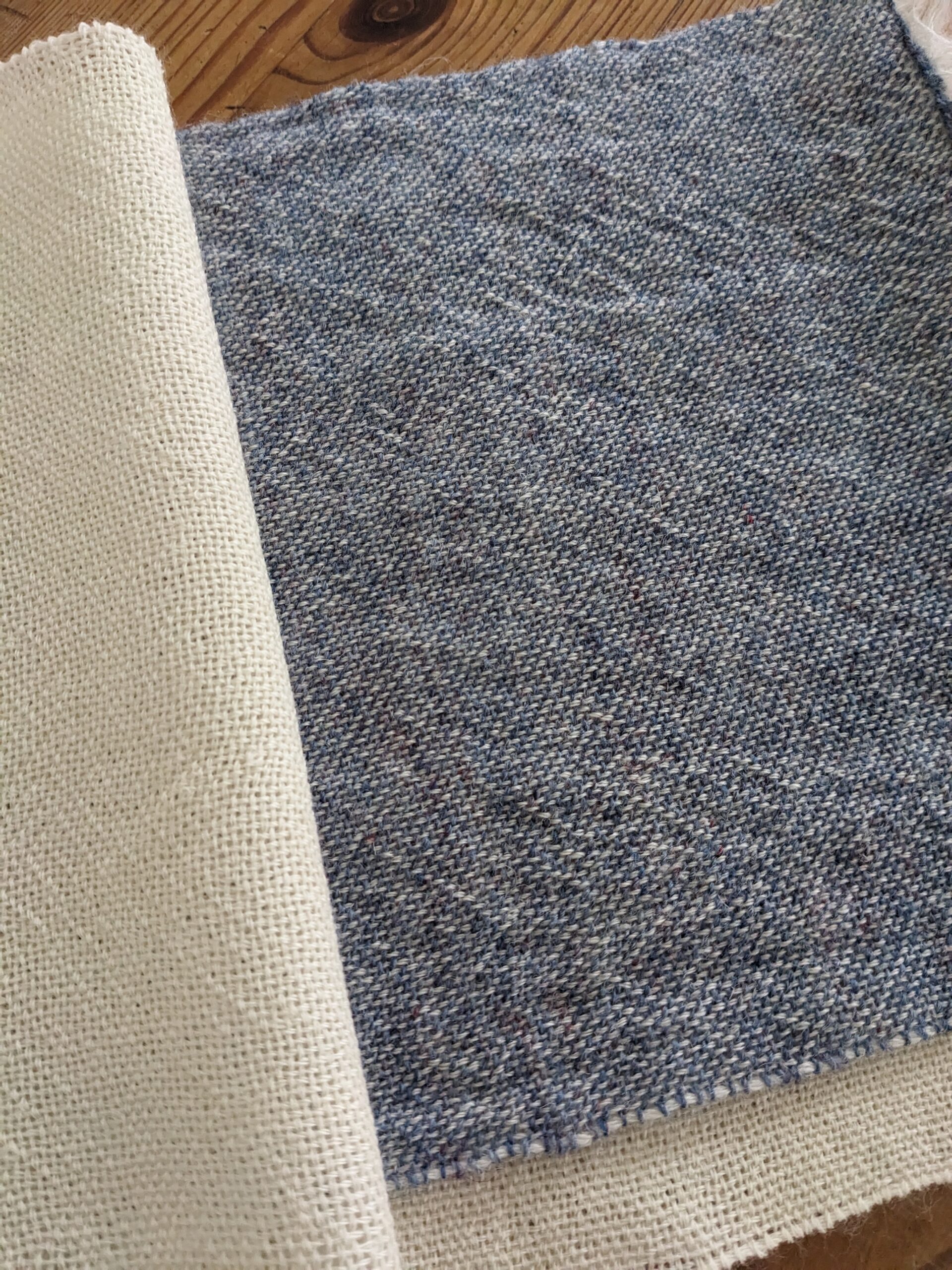
This is reminiscent of some of the research I’ve been doing into how some textile weave patterns were achieved using threads spun in opposite directions. The light catches the threads in a different way and gives a subtle tonal change in pattern. This was exploited by cultures as far back as the Iron Age and can be seen in examples of textile fragments from the Hallstatt salt mines c.800-400 BC. However the technique dates to much before this with an example from a copper mine dated 1600- 1500 BC in Mitterberg, Hochkonig.
Please see:
Karina Grömer: Textile materials and techniques in Central Europe in the 2nd and 1st millennium BC (2014). Textile Society of America Symposium Proceedings. Paper 914. “Textile Materials and Techniques in Central Europe in the 2nd and 1st ” by Karina Grömer
In Summary: There are other textile finds that exploit this technique and many papers on the subject. However, my weaving also displayed a definite twist as well as light reflection. I think it’s a good example of why we should always ‘finish’ our spun yarns before using them on a project. Finishing allows the twist to settle and relax, giving a balanced yarn. In this case though, the twist remained, regenerated by washing and relaxing in hot water. This was probably due to the original reverse twist of the yarn and my chain plying it (possibly in the wrong direction). Overall though, I like the way it has turned out and I will use it as a background for some embroidery I have planned.

